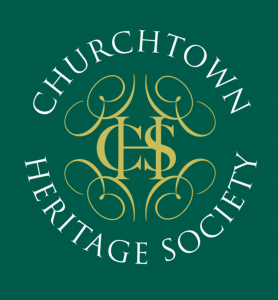There is a stone at the entrance of my quarry. We are led to believe this marked the spot where the white boys were hung. They were buried under this stone at the top of the hill. The stone is still there; it is quiet big. The curious thing about this stone is that it is not limestone as is in the quarry. It is brown sandstone. It must have been moved to that spot.
My late father told me the story that when he started working this farm, he had a workman named Jack Grady from Biddy’s Tree. He asked him to break the stone one-day. Well he said you can sack me now but I am not going to break that stone. It is still there and I don’t wish to move it.
The White Boys
The burning of the police barracks by the White boys took place on the night of 31st January 1822. The following is an account of the attack written to the editor of the ”Southern Reporter” by the Postmaster at Doneraile.
Donraile,
1st February 1822
Sir,
I am sorry to acquaint you of one of the greatest outrages that has occurred since the commencement of the disturbances in this part of the country. Last night a large party of White Boys attacked the Barracks occupied by the police at Churchtown. The first thing they did was to shoot the sentry and then they proceeded to set fire to the house, which was soon accom-plished as it was thatched. The action began when the police continued to fire while their ammunition lasted. After an hour the insurgents went off taking all the arms the police had. They killed four of the police, broke the arms of the chief constable and departed leaving the remainder wounded. They took sixteen sets of arms, ten swords, six pistols and some bayonets.
The police fought with determination and courage until the roof of the house fell in on them. The White Boys set fire to other houses, one in which the horses of the police were kept. Five or six horses perished in the flames. Then they took off and by mistake took one of the police with them. When they found out their mistake they dumped the policeman on the road near Annagh.
I have been told by a man who was at the scene of the attack, and he said it was frightening to see all the dead bodies in such a state. The street was covered in blood and some pigs which got loose were tearing at the bodies of the dead horses.
I am sorry to give you such a shocking account, but you may rely on the truth of it.
I am, Dear Sir
Yours very truly
Thomas Haycroft.
Following the attack five men were arrested. Their names were as follows; John Mahony, Cornelius Relihan, John Relihan, Daniel Breen whose real name was Bresnihan from Ardglass and Denis Moyihan. They were tried in Cork on 23rd February 1822. Cornelius Relihan, John Mahony and Daniel Bresnihan were found guilty. The case against John Relihan and Denis Moyihan was not guilty and they were acquitted the following Sunday. The three found guilty were brought to Beddy’s Rock, now called Flannery’s Quarry, where they were hanged. The priest who attended the execution was Fr John Kiely, parish priest of Mitchelstown, who it is thought was a native of Churchtown. He spoke in Irish to the prisoners and those present that day. He asked the prisoners to make atonement and confess their crimes, but they all protested their innocence. In 1833, that same parish priest ran into trouble in his own parish of Mitchelstown, when he was accused of being too friendly with the local landlord, Lord King-ston, one Sunday during Mass some of the parishioners interrupted him and one man shouted: ‘Get down you Castle Hack, you are more a servant of the Lord of Mitchelstown Castle, than of the Lord in Heaven’. Fr John Kiely sometime later resigned his parish and left Mitchelstown forever and went to live in Cobh.




